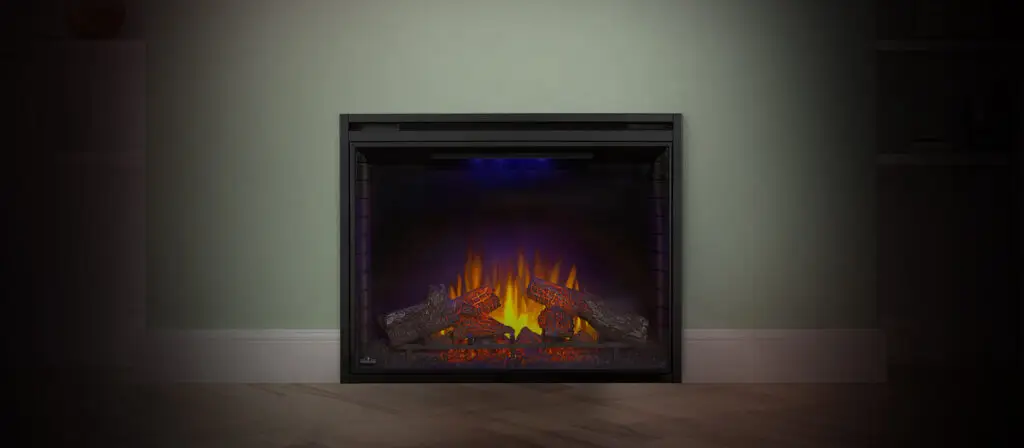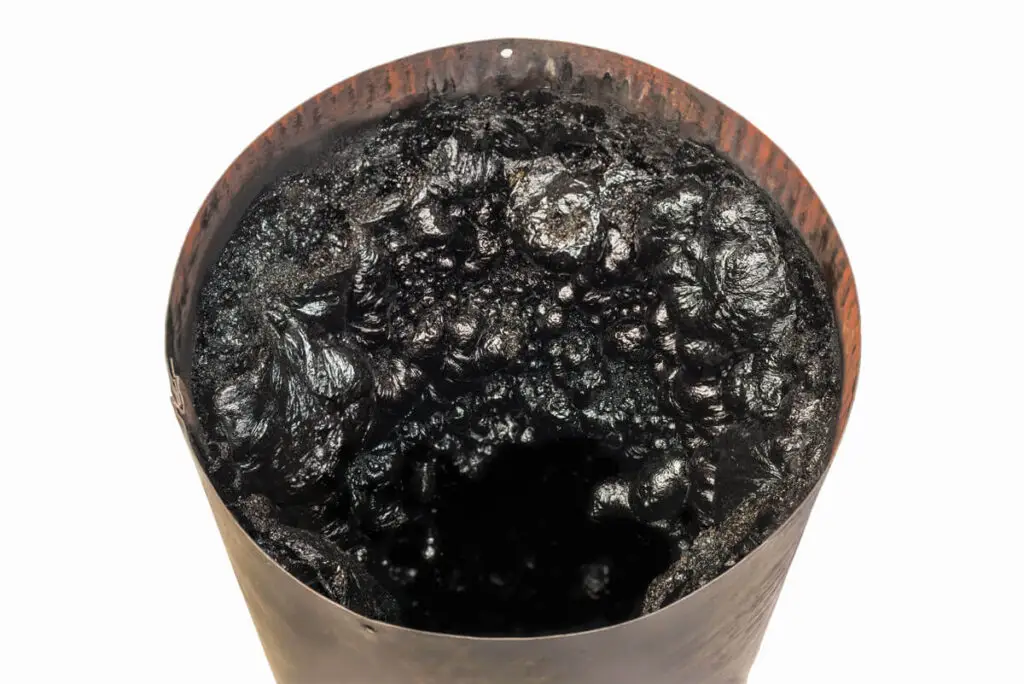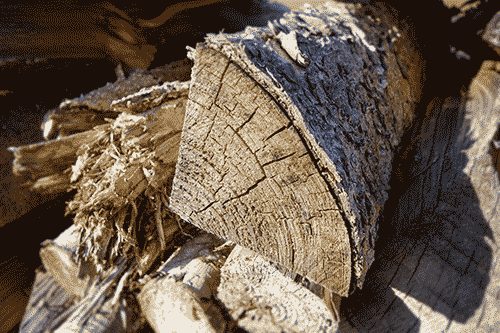Green wood is wood that has been recently cut and has not yet dried out enough to become seasoned wood. Green wood is very wet with a lot of sap and moisture content, so much so that nearly 50% of the weight of a stick of green wood can be water alone. Due to its high-water content, green wood is one of the worth things that you can burn in your fireplace.
Why Green Wood is Bad
Not only does green wood not burn as hot making it harder to heat your home, but it also causes excessive amounts of creosote to build up in your chimney at a dramatically faster rate. Creosote buildup is the leading cause of chimney fires which are extremely dangerous and burn down thousands of homes every year.
- Cool Fires: Green wood does not burn as hot as seasoned wood because the bulk of its energy used in the combustion process is absorbed to evaporate the water in the wood. Cooler smoke allows more condensation of unused products of combustion similar to how water condensates on the outside of a glass of iced tea.
- Water is sticky: A lot of people don’t think about it but water is one of the stickiest substances on the planet. The evaporated water in green wood helps particulates in smoke stick to the side of the chimney flue contributing to accelerated buildup.
- Poor combustion: Water does not burn. Fire needs air for complete combustion and water vapor takes the place of clean air needed for a fire to thrive. Incomplete combustion means thick heavy smoke absolutely loaded down with unused products of combustion. Thicker smoke means more creosote, a lot more.
- Increased residence time: Because the smoke is not as hot as it should be and is heavier due to water content, it has what we call increased residence time in the chimney. This means the slow-moving heavy smoke gets to spend more time in the chimney flue when it should be exiting quickly and has more time to deposit particulates on the inner flue wall.
- It is hard to keep the fire going: Green wood is hard to get burning as the water must be evaporated out of the wood before the wood can burn. This takes a lot of heat, heat which is used up in the evaporation process instead of sustaining combustion. Frequently, a fire made with green wood will go out before the wood is completely burned up. It requires constant tending to keep the fire going and is a hassle to deal with.
- It can smoke up your house: The thick cool smoke from burning green wood does not draft nearly as well as the fire from seasoned wood and can sometimes roll out of the fireplace into your house instead of going up the chimney, especially when first starting the fire.
- It is corrosive: Water reacts with creosote and forms acids, sulfuric and hydrochloric acids to name a couple. Not only are these acids a toxic irritant, but they can also corrode your chimney. A metal chimney can be damaged to the point of perforation and liner failure, even stainless liners that normally do not rust. A masonry chimney will suffer deterioration of the mortar in the flue joints and smoke chamber resulting in gaps that allow heat and smoke into the home structure. Chimneys are not cheap to fix. It is best to avoid this problem.
- It can ruin your draft: As creosote builds up in the chimney it narrows the size of the flue and causes turbulence due to it creating an uneven surface. It makes it harder for the smoke to flow upward out of the chimney which creates the draw that pulls in fresh air to feed the fire.
- It causes chimney fires: The biggest risk of burning green wood is a chimney fire. Chimney fires are violent and more often than not, devastating. When you constantly burn green wood, it is not a question of if you will have a chimney fire but when. Chimney fires can and do destroy homes and kill people every year. Even if you get lucky and your home and family survive a chimney fire, you will need costly repairs on your chimney before you can use it again.
The effects of water in unseasoned or wet wood are a compounding combination of adverse reactions that are a recipe for disaster. While one fire with green wood will not burn your house down, understanding what a huge difference it makes vs using seasoned wood will make you very leery about using green wood at all. You can quite literally build up as much creosote in your chimney from burning green wood for two weeks as you would from burning seasoned wood all season.
Seasoned wood is defined as wood that is split and stacked and allowed to dry until the moisture content of the wood is down to 15-25%. Preferably, seasoning wood requires storing the wood off the ground and covered from above to protect it from the elements while remaining open on the sides for good airflow.
How to Tell if Wood is Green or Seasoned
Before you build that fire, it is best to know the quality of the wood you are putting into the fireplace. There are some easy ways to tell if your wood is seasoned or green if you know what to look for.
- Green wood is heavy: As we said earlier, almost 50% of the weight of green wood can be from water. Green wood is much heavier than seasoned wood. Pick up a stick of wood and feel how heavy it is. Green wood almost feels heavier than it should be while seasoned wood is noticeably lighter. An armload of seasoned wood is easy to carry for most people.
- Give it a whack: Whack a couple of pieces of green wood together or on some concrete and all you get is a dull thud. Seasoned wood has a higher-pitched clink sound to it. Some seasoned hardwoods even sound much like bowling pins on a strike.
- It is hard to split: Unseasoned wood is much harder to split. It tends to absorb the maul instead of splitting the wood. Well-seasoned wood splits much easier and you often hear that satisfying clink sound when it splits.
- Look at the bark and ends: The bark will begin to separate on well-seasoned wood, on green wood the bark is still stuck on like super industrial glue. Look at the end of a stick of firewood for cracks in the wood. These cracks form naturally as the wood dries out. No cracks, probably green. Seasoned wood also has a greyer color to it. Green wood looks fresher and more vibrant.
- For the techies: You can check the inner side of a freshly split piece of wood with a moisture meter. Well-seasoned wood has 20% or less water content but below 25% will work.
Still Not Sure?
You will be when you try to burn it. Green wood does not burn that well and produces a lot of smoke. It will also steam, hiss and sizzle with water bubbling out the ends. If your fire does not produce much heat, smokes a lot, and keeps going out, you are probably trying to burn green wood.
Best Way to Get Wood and Store Wood
The best way to get seasoned wood is to acquire and store your wood for the next season during the previous year. That way you know the wood has had a full year to dry out properly. As cold weather approaches and cold weather continues, seasoned wood from your local supplier is harder to find. You must be careful that someone does not try to pass off green wood on you because that is all they have. Buying your wood for next season the year before takes the guesswork out of it and ensures that your wood is ready to burn when the time comes. Most people do this with two stacks of wood and rotate between them each year.
If you are in a pinch and it is available in your area, you may be able to find kiln-dried wood. This wood is artificially seasoned in heaters. Kiln-dried wood can be pricier and is sometimes dryer than necessary which results in a quick burn, but it helps as a last option when there are no other sources of seasoned wood available.
Best Types of Wood for Maintaining a Healthy Chimney
When choosing a type of wood to burn the best woods are hardwoods. They produce more heat with less residue and creosote buildup in your chimney. Softwoods burn faster but can wreak havoc in your flue. You should never burn pines or spruce as these will build up thick resiny creosote in your chimney in a hurry. To see a list of the best types of wood to burn in your fireplace click here.




